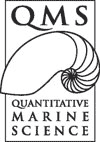
2008 ASLO Ocean Sciences Meeting: From the Water Shed to the Global Ocean
Orlando, Florida, USA, March 2-7 2008
During the first week of March, I had the opportunity to attend to Ocean Sciences 2008, held in Orlando, USA. With 4000 participants, this has been my first experience in such a great conference. There were about 100 topical sessions, from the very tiny micro-algae to the very large scale circulation patterns in the ocean. A couple of the main drawbacks I found was the short time to move between one talk to the other, sometimes sprinting from the top floor to the 3rd floor, and to decide which talks to attend when simultaneously scheduled.
The organization was quite good. I didn ’t have much trouble finding the talks I was interested in. The poster sessions were organized so that all the posters were available during the week. They were organized according to their topical session. The room was huge and my poster was located at the very end of it. A negative point, my poster was the only one of the same session to be located in a different panel. I found out that some people thought my poster wasn’t exposed at all, which was quite unfortunate.
My main interest was on the session Global Mode and Intermediate Waters: Their Physics, Biogeochemistry, and Variability, as my PhD centers on the Subantarctic Mode Water variability in the Southern Ocean. Although my poster presentation was not till Wednesday, 5th March, I had the opportunity to listen to very good talks. During my poster session, I didn’t stop talking for the 2 hours designated for the event. It was great. I spent 30 minutes discussing my results with Dr. Michael McCartney, from WHOI, and he gave me some pieces of advice to apply on my research and the opportunity to discuss about my work in the future. Dr. Jorge Sarmiento also spent some time discussing new results related to my poster.
Attending the conference gave me the opportunity to show my results and discuss new techniques and future opportunities with scientist working on my field. Thank you to the UTAS-CSIRO Joint PhD Program in Quantitative Marine Science, ACE CRC, IASOS and CSIRO for their financial support.